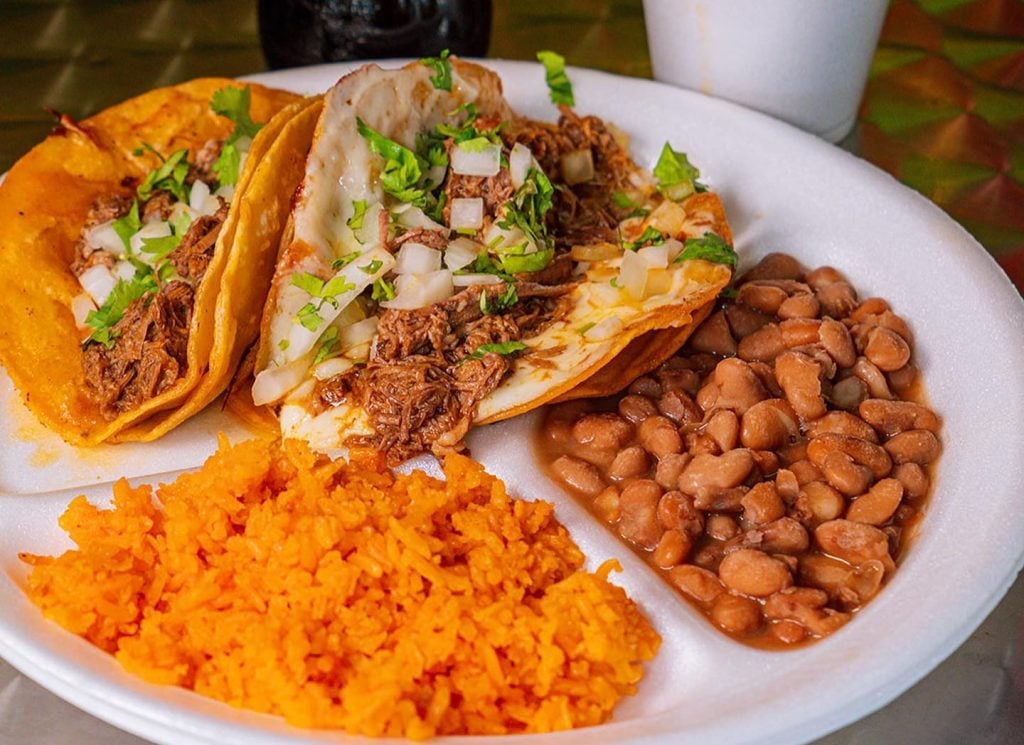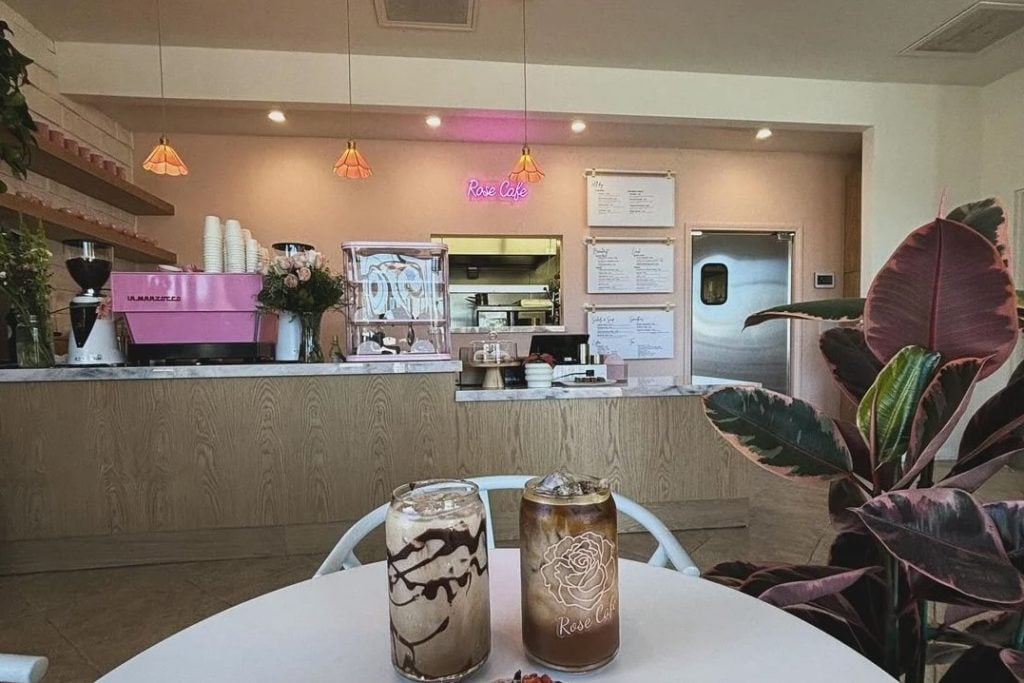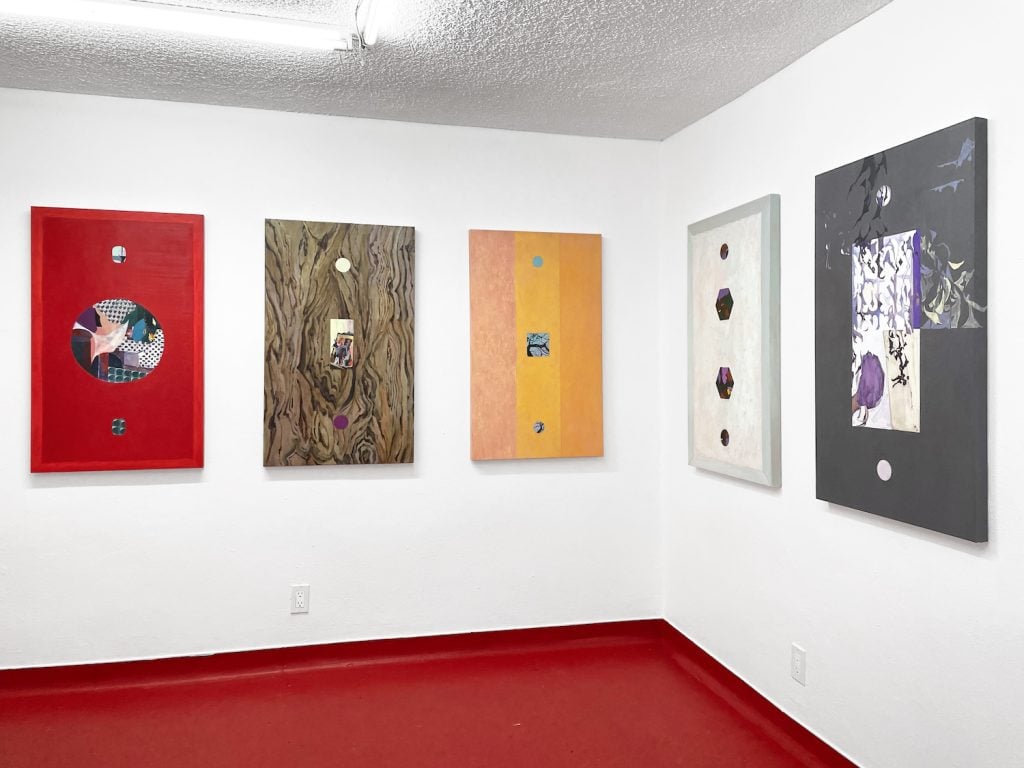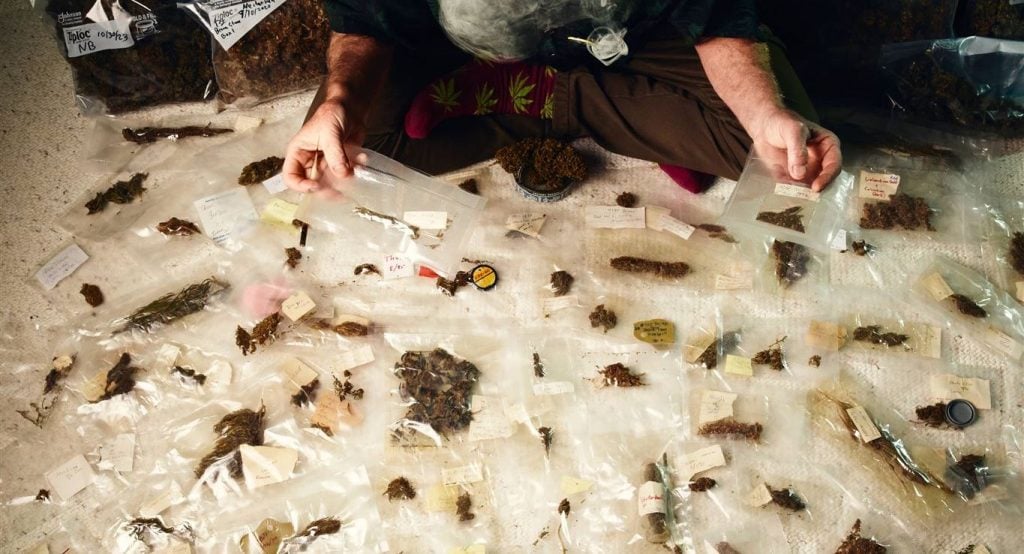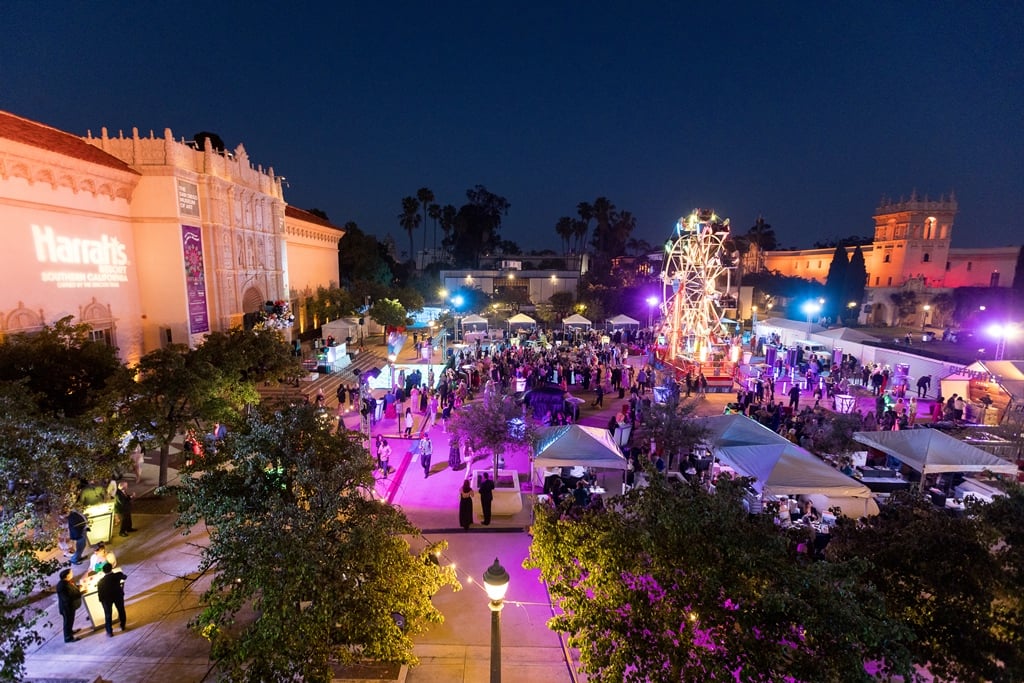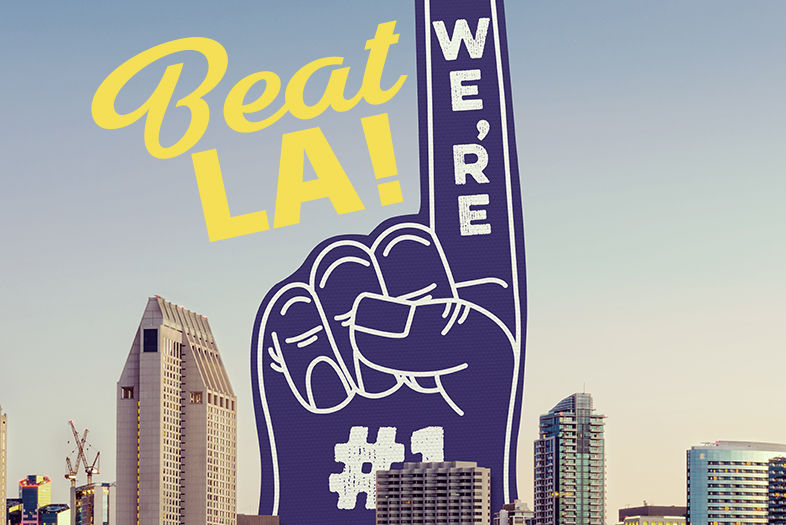LA confidential: San Diego is the better burgh! Heading into baseball season, it’s time for a little bragging and boasting. All in good fun, of course. We’ve got a lot that the City of Angels hath not. Here are 22 reasons why we kick LA’s sorry (surgically enhanced) butt. And traffic is just the start.
We have a lower earthquake risk
Southern California is widely considered “earthquake country,” but if you really want to split hairs (or tectonic plates) it’s Los Angeles that’s at greater risk for the Big One. LA has more fault lines than anywhere else in the state, and is within 35 miles of the southern segment of the San Andreas Fault, which seismologists say is capable of a deadly magnitude 8 earthquake.
San Diego County’s Office of Emergency Services says our region has “sparse seismicity” compared to its Southern California neighbors. Sure, San Diego gets some small earthquakes and would likely feel the rumbles of a big LA quake, but experts don’t think it would be the epicenter. San Diego’s own Rose Canyon Fault is considered the only major active earthquake fault in the urban San Diego region, but it hasn’t given us a good shake in at least 200 years.
—Jennifer McEntee
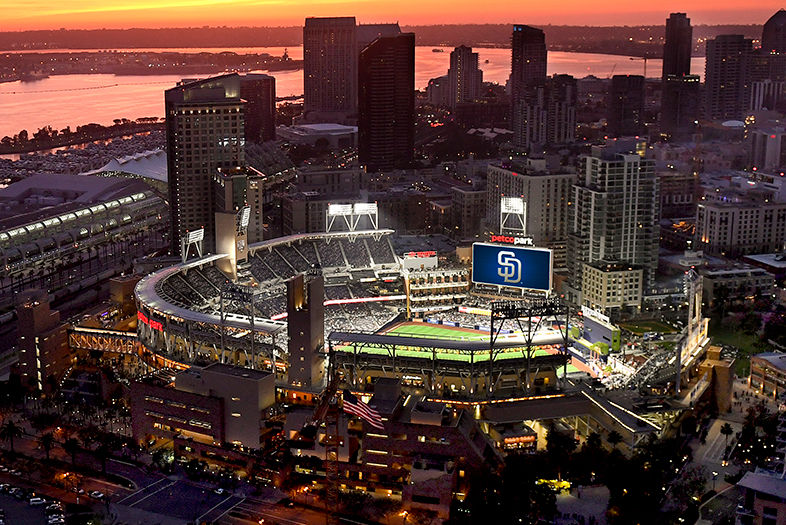
22 Reasons Why San Diego Is Better Than LA
Photo by Kit Leong / Shutterstock
$62+
Price of a Padres ticket behind home plate
$150+
Price of a Dodgers ticket behind home plate
We don’t buy our championships
Two hundred million dollars will buy you a couple things. An island in the Bahamas. A presidential inauguration. Add $27 million, and you could even have the 2016 LA Dodgers.
The San Diego Padres opened last year spending $99 million on their players. The Dodgers had the highest payroll in baseball at $227,329,905.
The Dodgers were like that youth soccer team from the good part of town who hires Pele to coach their six-year-olds, and resuscitates Sun Tzu to teach them the art of war. Of course that team is going to whup the kids whose parents have failed to drive cars fueled by gold and saffron.
So the Dodgers bought—excuse me, won—the division. At this point, is it about baseball anymore?
I have, at times, wished the Padres would spend bazillions of dollars and bring a World Series to San Diego. But now I take pride in the fact that when—it’s not an if, it’s a when—the Padres manage to take the title, it will be with a scrappy team of underpaid players who won by raw talent, sheer will, and magic.
Yes, the Padres are the Bad News Bears. And when it finally happens, the payoff will be that much sweeter. You can buy greatness, or you can make it. One of those is expected, and one of those is memorable.
—Troy Johnson
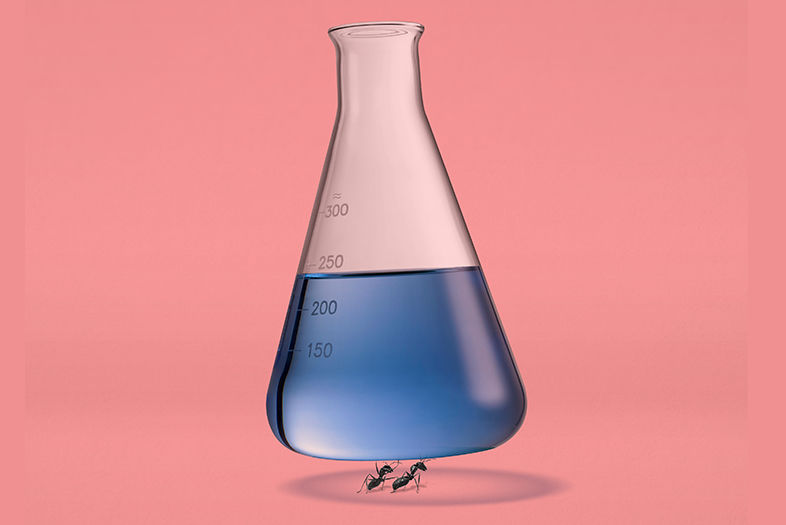
22 Reasons Why San Diego Is Better Than LA
Our scientists are scrappy
I could have lived in LA. When I relocated from Virginia, my employer said I could go anywhere they had an office. LA was their top market, and I was working on a (really bad) screenplay. LA made sense.
But that’s not what I did. Los Angeles was overwhelming: traffic, pollution, aggression, masses of people. LA was less a place to love than to endure. San Diego seemed more manageable. I was visiting a friend in OB, and there was something about the way the light hit the water off the pier. It just felt like home.
That was 25 years ago, and that decision gets validated frequently, particularly in my work. I write about biotech—translating the science into English. I can’t imagine a better place to ply my craft.
Most people think of San Diego as a tourist mecca or a military town, but my lens is biology. I think about the stretch from UCSD to Sorrento Mesa: Salk, TSRI, Sanford Burnham Prebys, Illumina, and hundreds of small companies trying to move genius ideas to market—a target-rich environment.
There are actually more life sciences professionals in LA County than San Diego, but it’s kind of a misleading statistic. Many work for just one company, Amgen. San Diego’s biotech community is more distributed.
In fact, San Diego has something LA wants: a life sciences startup culture. The LA County Board of Supervisors recently earmarked $3 million for LA BioMed, a bioscience incubator. They’re sick of seeing their young entrepreneurs flee to San Diego and the Bay Area. Who can blame them?
That’s what makes San Diego such a vibrant life sciences community—so many clever people willing to risk everything on an idea. Edico Genome is developing hardware and software to accelerate genomic diagnoses. Organovo is 3-D printing liver and kidney tissue to advance drug discovery. Tocagen is developing a gene therapy to treat the most deadly brain tumors.
Some people lament that San Diego doesn’t have a big biotech to anchor the cluster, like an Amgen or a Genentech (now part of Roche), but I think that fits the city’s personality. We’re smaller, more agile, quicker to the prize. We have a community of serial entrepreneurs who develop a therapy, sell it to one of the big guys, and reinvest the proceeds into a brand-new idea.
I don’t have the nerve for that sort of risk, but I love talking to people who do. Living in San Diego, I never have to look hard to find them.
—Josh Baxt
â
Mexico is our next-door neighbor
Most of the cities on either side of the nearly-2,000-mile US-Mexico border aren’t even worth a pit stop. (We’re looking at you, Antelope Wells.) In our case, we have two dynamic cities straddling la frontera, which means double the fun.
Tijuana’s reputation as the street taco capital of the world is old news: between Telefónica Gastropark and Taco Alley, there’s a truck or stand for everyone. What’s newer is the city’s finer dining delights: stalwart Misión 19 still churns out inventive Mexican cuisine, Oryx Capital has a delicious suckling pig and Verde y Crema is a paradise for locavores. Drinkers will enjoy the multitude of craft beer tasting rooms, like at Insurgente and Border Psycho, as well as the craft cocktails at Nórtico, Oryx Capital’s speakeasy.
Galleries like La Caja Galeria are hosting some of Mexico’s most esteemed artists, like Tijuana native Jaime Ruiz Otis, who uses recycled materials from foreign factories, or maquiladoras, for his pieces. Design stores are popping up everywhere, too: Object stocks only Mexican makers, and Casa Duhagón, featuring designs from its principal, who is also an architect, is a decorator’s dream. Speaking of design, Tijuana’s first boutique hotel, One Bunk TJ, is set to open on Avenida Revolución. In it, there are a handful of smartly outfitted rooms and a pop-up store from Object.
There’s also Cross Border Xpress, which opened in late 2015. For just $16 each way, you can skip the border and Tijuana traffic, park in the United States, and access the Tijuana International Airport via footbridge, opening up a world of lower-cost flights. To date, 1.3 million passengers have done so. International travel doesn’t get any easier. Take that, LAX!
—Jackie Bryant

22 Reasons Why San Diego Is Better Than LA
Photo by Blake Midnight
Our soldiers are not actors
While LA might make movies about the military, we are the military. San Diego is the birthplace of naval aviation, the home of the real Top Gun flight school, and the training center for all Navy SEALs. We breed real-life heroes, not actors who play them on TV.
—Kimberly Cunningham
Nobody walks in LA, but they should
Within two weeks of living in Los Angeles, I paid over $200 in parking tickets. I lived there for almost five years before coming to my senses and moving back to SD. It’s true: Nobody walks in LA. But if more people did, they could avoid some of these issues:
- You need a law degree to read parking signs. There’s a different parking sign on every street corner: “Two-hour parking Monday–Friday, except during hours divisible by four, ignoring daylight saving time and feast days (Julian calendar only).”
- Don’t expect free parking. Not at the grocery store, Target, the post office, work, your friend’s apartment complex, anywhere.
- “What’s the point? Everywhere you go has valet!” There’s a valet in places where there shouldn’t be, like IHOP and Runyon Canyon. And regardless of where you are, valet parking’s an overpriced hassle.
- A traffic jam, when you’re already late. There’s no such thing as an ETA. You can ask Waze or Siri and they’ll give you their best guess, but you need to tack on extra time for traffic. There might be a restaurant opening, movie premiere, or the president’s motorcade is in town, or they’ve simply decided to shut down an entire freeway (carmageddon).
- Jesus, take the wheel. There’s a guy who stalks the streets dressed like Jesus. He used to hang out near Sunset and Highland and Crescent Heights and Wilshire, but I’ve also run into him at The Comedy Store. Moses parted the Red Sea, but Jesus has no such powers in traffic. In fact, he makes matters worse. People stop to take pictures. Keep it moving: Honk for salvation and be on your merry way.
—Maile Proctor
We grow more avocados
Holy guacamole!
San Diego County is the leading producer of avocados in the US, according to the San Diego County Farm Bureau. In fact, 40 percent of all avocados grown in California come from our region.
Fallbrook is hailed as the “Avocado Capital of the World,” and hosts a free avocado festival each April with an annual attendance of more than 100,000 people taking in avocado-themed art, a guacamole cook-off, food vendors with delights like avocado gelato, and even a “best-decorated avocado” contest.
—Jennifer McEntee
â
Talk to my agent…in San Diego
“There are more agents in LA, but they are, like the town itself, TV- and movie-focused, so I’d much prefer to be agenting books from San Diego, an ever-waking giant. On the edge of America, bordering Mexico and the Pacific, we can see beyond the confines of the New York publishing maze and focus on our authors, who are based in California and the world beyond. The bottom line is, once you make your mark, phone calls are returned, so why not live in America’s Finest City?”
—Legendary literary agent Sandra Dijkstra, on choosing to live and work in San Diego
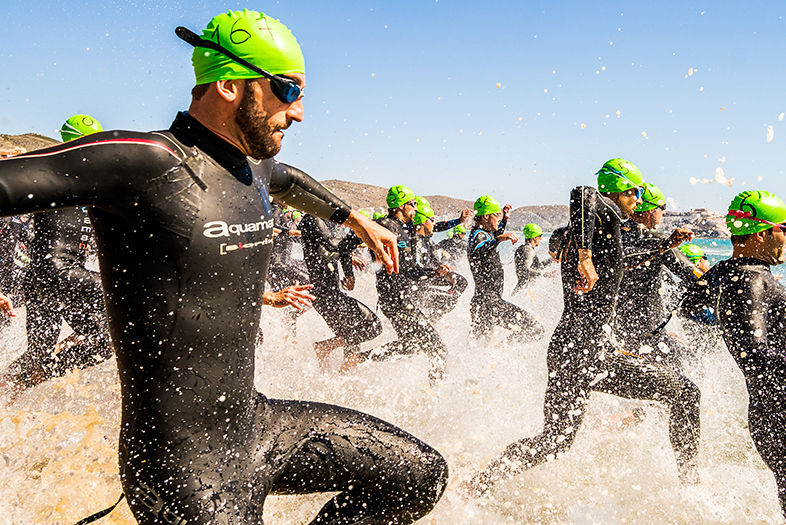
22 Reasons Why San Diego Is Better Than LA
We tri harder
Sure, LA is on the short list to host the 2024 Olympics. But without us, there would be no tri in the Summer Games. The first-ever triathlon took place on Fiesta Island in 1974. San Diegans Jack Johnstone and Don Shanahan conceived, directed, and participated in the race they coined “triathlon,” a term Johnstone spelled out for the trophy maker since it didn’t yet exist in the dictionary. You’re welcome, world.
—Christine Pasalo
â
We brew bigger and bolder
If you want to enjoy a pint of beer or a glass of wine right where they are made, LA County is a bit of a beverage desert: It’s distinctly lacking in local breweries, wineries, and vineyards.
San Diegans are especially lucky from a fermented beverage standpoint: We have an astounding variety of choices that are not only easily accessible, but also world-class in terms of quality.
On the beer front, San Diego currently boasts more than 130 breweries, spread out across the county. We have brewers as far north as Fallbrook and Oceanside, as far east as Alpine and Julian, and we have seven breweries just between Chula Vista, El Cajon, and Santee. Not to mention about a dozen brewpubs in North Park alone.
LA County has 26 breweries—one of which is Pabst—most of which are in the hard-to-reach downtown area. By comparison, we’ve got 26 breweries just within the stretch from Oceanside to San Marcos.
Of course, if you want to talk about the quality of beer produced, there’s little doubt that San Diego outshines not only Los Angeles, but most every other county in the nation.
Dozens of our breweries have won major medals at the biggest national and international beer competitions; last year San Diego won 32 medals at the World Beer Cup and Great American Beer Festival alone, and Karl Strauss was crowned 2016 Mid-Size Brewing Company and Mid-Size Brewer of the Year by the latter.
Don’t get us wrong, LA breweries are—by and large—excellent in terms of quality, but San Diego has gone beyond just quality; it has actually created its own unique style of beer. The now-famous “San Diego style” started with turbocharged IPAs that were super-hoppy, big, bold, and bitter. That approach soon spread to other styles of beer—including pale ales, pilsners, and Belgian styles—and is now emulated by breweries around the world, including in LA.
Prefer reds and whites? There are 115 wineries in San Diego County and they—much like our breweries—can be found in every corner of the region. Los Angeles County has 25–30 active wineries open to the public, but we have 35 in our central inland area alone (between Escondido and Ramona), including Domaine Artefact, Highland Hills, and Milagro. If nature flares up your allergies, we’ve got urban wineries, too, like Vinavanti or LJ Crafted.
Chalk it up to San Diego having more distinct wine-friendly microclimates than any other county in the US, resulting in more than 60 vinifera varietals—everything from France’s Bordeaux and Rhône to Italy’s Tuscan and Piedmont and Spain’s Rioja—not to mention the old classics from right here in California, like primitivo and petite sirah.
Wherever you may be in San Diego County—you can most often get to a brewery or winery in less than 20 minutes. And where does 20 minutes in LA get you? I think you already know the answer to that one.
—Bruce Glassman
Our ’Bertos are better. So there.
San Diego knows Mexican food like only a community this close to the Tijuana border could.It makes sense. San Diego is the birthplace of the Roberto’s Taco Shop chain, a 24-hour fast-casual eatery that knows its way around a carne asada burrito. Founded in 1964, there are 14 Roberto’s in San Diego today, and hundreds of worthy ’bertos imitators, from Adalberto’s to Juanberto’s to Rigoberto’s. The closest Angelenos can get to an actual Roberto’s Taco Shop? Mission Viejo. In Orange County. Lo siento, amigos al norte.
—Jennifer McEntee
â
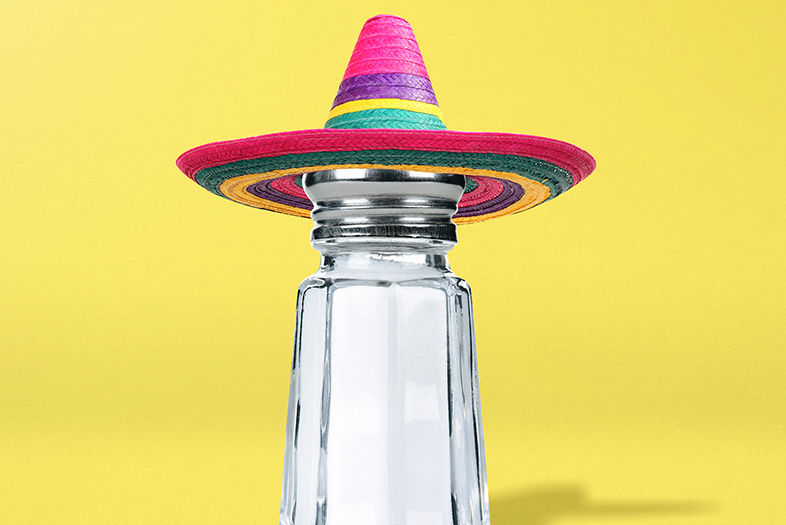
22 Reasons Why San Diego Is Better Than LA
We invented three Mexican food favorites
Not only have Mexican food outposts flourished in San Diego since the 1920s, but we expanded the menu, introducing a drink and two dishes to the rest of the nation.
Frozen Margarita
Back in 1947, bartender Albert Hernandez Sr. (who passed away in 2006) invented the frozen margarita at La Plaza, a Mexican restaurant once located in Bird Rock.
Hernandez’s take was an adaptation of the margarita served at Rancho La Gloria, the Baja restaurant often considered the cocktail’s birthplace. Instead of serving the drink on the rocks, Hernandez combined Jose Cuervo Gold tequila, Cointreau, fresh lime juice, and ice in a blender. Made by the pitcher, the slushy margs were served in salt-rimmed glasses adorned with a lime wedge.
California Burrito
Yep, that wonderful forearm-size frankenfood in which french fries share top billing with carne asada, salsa fresca, cheese, and guacamole. It’s an affront to the cold-pressed juice lifestyle and we’re okay with that.
Granted, its origin story lacks detail. According to Gustavo Arellano, a leading historian of Mexican American food, it was first sold in the 1980s by the ’bertos chain, the San Diego family taco shop operation that began with Roberto’s and includes Alberto’s, Filiberto’s, and others. But no one can recall which ’berto invented it, nor the specific year it was first sold.
Still, two points are incontestable: french-fry-filled burritos didn’t exist in the US before they appeared in San Diego, and fries make everything better.
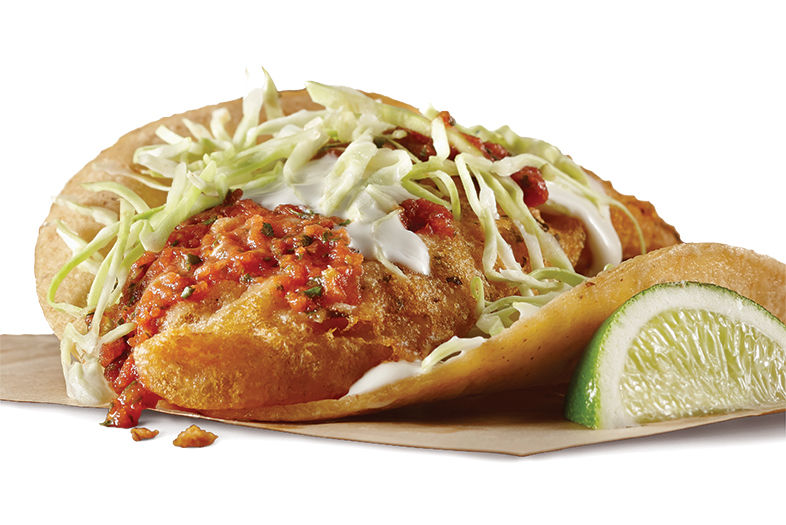
22 Reasons Why San Diego Is Better Than LA
Fish Taco
San Diego State alum Ralph Rubio introduced America to fish tacos in 1983. His flagship? A converted Orange Julius walk-up stand on Mission Bay Drive dubbed “Rubio’s Fish Tacos.”
The business idea was inspired by surf trips he’d taken to San Felipe during college, when he and fellow Aztecs fueled their pursuit of swells with the prized Baja street food.
Today, the first brick-and-mortar Rubio’s, which sits on the spot of the walk-up, is just one of 201 restaurants operating in California, Nevada, Arizona, Utah, Colorado, and Florida.
His surf days are behind him, for now. “I still have all of my boards,” Rubio says. “I need to sell a few more fish tacos before I can ‘retire’ and paddle out again.”
—Christine Pasalo
We’ve only lost one team
So the Chargers have left us. I won’t say good riddance, because I died inside. The Chargers were a bridge between me and my father. The Chargers were better than church.
But I will say this: poor Los Angeles.
The Chargers have gone to a city that has proven unable to keep a football team. The Raiders left. The Rams left (and returned). The Chargers left (they started there in 1960). Los Angeles loves cheekbones more than it loves football.
There’s a reason why football doesn’t work in Los Angeles. First of all, in order to navigate LA traffic, you’d have to leave on a Thursday to make the kickoff at a Sunday game. Second, traffic is awful. Third, traffic is bad.
No one will go. The “selfie value” just doesn’t pan out.
And now LA has two teams—the Rams and the Chargers. The Rams have the richest owner in football. The Chargers don’t. Who do you think is going to spend the money to brand the team and win over the hearts of Angelenos?
The Chargers are now the bridesmaid, not the bride, to a town that doesn’t care. They are the microscopic fish in a big pond.
Trust me, San Diego, when I say that we’re better off. We can take a few years spending that money on things that matter—education, infrastructure, fraudulent city contracts—and then invest in a team with an owner who has the clout and passion to actually compete.
San Diego Super Chargers, no more. In Los Angeles, they are the San Diego Superfluous Chargers.
—Troy Johnson
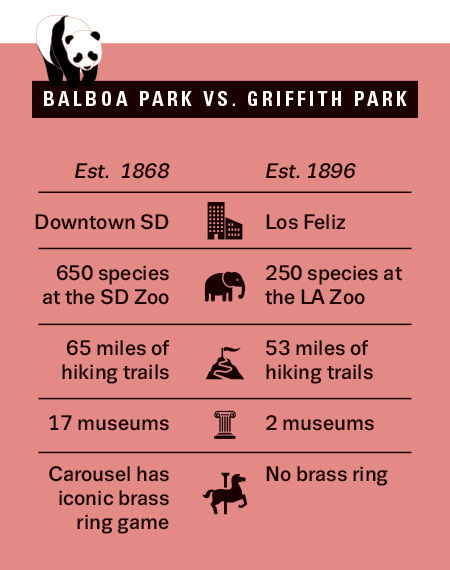
22 Reasons Why San Diego Is Better Than LA
In terms of public parks, we are fields ahead
San Diego has the 12th-best park system among the largest 100 American cities according to The Trust for Public Land (TPL), the national nonprofit that advocates for the creation and improvement of parks. Los Angeles didn’t even place in the top 60.
Because parks make up so much of our city area (nearly 40,000 acres), they’re less people-dense than, say, those in LA. According to ParkScore, TPL’s rating system, 30 San Diegans are served per park acre, compared to 100 in LA. Less crowding means better access to playgrounds, recreation centers, and basketball courts.
Also, more of us live within one mile of a public park than someone living in LA, and when parks are plentiful and nearby, they improve a city’s quality of life: Studies have shown that people living in or near green areas experience a 12-percent lower mortality rate.
This year will see upgrades to existing playgrounds in park-deficient communities, such as Chollas Lake and Larsen Field, and the completion of new skate parks in Linda Vista and City Heights, thanks to the department’s pursuit of federal and state funding.
—Christine Pasalo
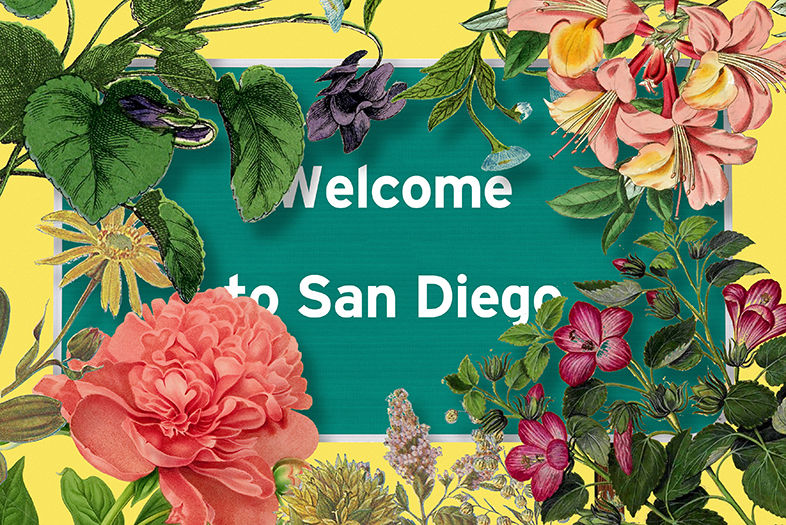
22 Reasons Why San Diego Is Better Than LA
Our nature is better and closer
Of San Diego County’s 4,526 square miles, one-third of our county is public land available for recreational use and all is accessible within a two-hour drive. Add to that the 2,000 species of plants, including the rare Torrey pines, and San Diego really is still wild. San Diego’s jagged topography lends itself to a rich and varied landscape—we have the largest biodiversity of any county in the US–and while sunny and 73 degrees might seem like a constant, our highest and lowest temperatures have been recorded at 122 F in Anza-Borrego Desert State Park’s rugged badlands and a chilly minus 4 F in the pine-shadowed canyons of Cuyamaca Rancho State Park.
More than 500 species of bird have been recorded by the San Diego Audubon Society, at least 23 of which are endemic to this region. Look for the light-footed clapper rail and Belding’s Savannah sparrow at the Tijuana Estuary, then visit the mountain town of Julian to see frenetic white-naped pygmy nuthatches creep up oaks and rare white-headed woodpeckers bore holes in a pine snag.
But birds aren’t the only animals here—San Diego is also home to 742 species of mammals, which includes the endangered peninsular bighorn sheep, found on the foothills surrounding Borrego Springs, or the jumpy Stephens’ kangaroo rat.
—Jade Belzberg
â
We lead the state in welcoming refugees
Since 2009, the county has taken in 23,094 refugees from 34 countries, according to data compiled from the U.S. Department of State. That’s more than any other region in California, making us a leader in the state’s effort to shelter people forced to flee their home countries due to violence and persecution.
—Christine Pasalo
â
LA can’t come close to San Diego’s food quality
Los Angeles has an amazing restaurant scene. I’m not going to tell you different. To say San Diego has more options than LA is to admit lunacy.
What I will tell you is: San Diego’s restaurant scene is better.
San Diego has more small farms than any county in America. And if I’ve learned anything as a food writer, it’s that small farm food tastes a hell of a lot better than big farm food. It’s the difference between Coors Light and craft beer. The fewer things you focus on, the better those things are. Period. A pretty basic law of life.
LA has great big farms. That’s nice. San Diego has great small farms. That’s better.
Food tastes best the very second it is pulled from its source. Every second after that, it slowly descends into mediocrity and eventual spoil (not to mention it starts to bleed nutrients).
To test this theory, taste a ripe tomato as soon as it’s plucked from the vine. Hosannah! It tastes like an actual tomato. Sweet, acidic, perfect. It tastes like the tomato your grandmother swore tomatoes tasted like, and why she complains every time you cook. Now taste that same tomato three hours later. Still good. But less good.
“Farm-to-table” is an abused word. A lot of BS. Hell, fast food gets their produce from a farm somewhere.
But San Diego is by far the country’s truest “farm-to-table” mecca. Our 6,600-or-so small farms deliver the world’s best produce to our chefs in the shortest amount of time.
Chino Farm? The one that helped make Alice Waters and Wolfgang Puck famous? It’s not in Beverly Hills. It’s here.
Admittedly, Santa Monica had the first great farmers’ market in Southern California. But those days are over. Now, San Diego’s farmers’ markets are the greatest thing in not only SoCal, but the globe.
Our chefs are cooking with this produce. Los Angeles is cooking with it, too—just a couple hours or days later.
San Diego also has an ocean as its border. Groundbreaking studies have revealed fresh seafood to be desirable. Due to soul-sucking traffic, seafood takes longer to get where it’s going in LA. Nothing kills the quality of your restaurant meal quite like rush hour on the 405.
San Diego also has a Mexico, which is growing some of the best produce, olive oil, and wine in the Americas. Sure, Los Angeles can get some of that action, but only after a few hours in a hot truck. Congratulations on second place, Los Angeles.
On top of it all, LA lives and dies by trends—and trends are meant to die. With four million residents, a new restaurant opens up every six seconds or so. And with every restaurant that opens in LA, a formerly trendy restaurant closes. You may be thinking there are too many restaurants opening in San Diego—and there are—but LA is 10 times worse.
Instead of hopping from one trendy restaurant to the next, San Diego diners repeatedly visit their favorites. That repeat business helps restaurateurs, and they use that money and experience to get better. A lot better. Longevity breeds excellence.
So San Diego has the freshest produce and seafood of any big city in the world. Our restaurants tend to last longer, which yields better food. Sorry, LA. We’ll send you the food we don’t use.
—Troy Johnson
More in Beat LA:
-
Leaving Los Angeles
We asked Angelenos who defected to San Diego what they miss (and don’t miss) about life in La La Land.
-
Our LA Wish List
Don’t get us wrong. Tinseltown ain’t all bad. Here’s a few imports that SD could benefit from…
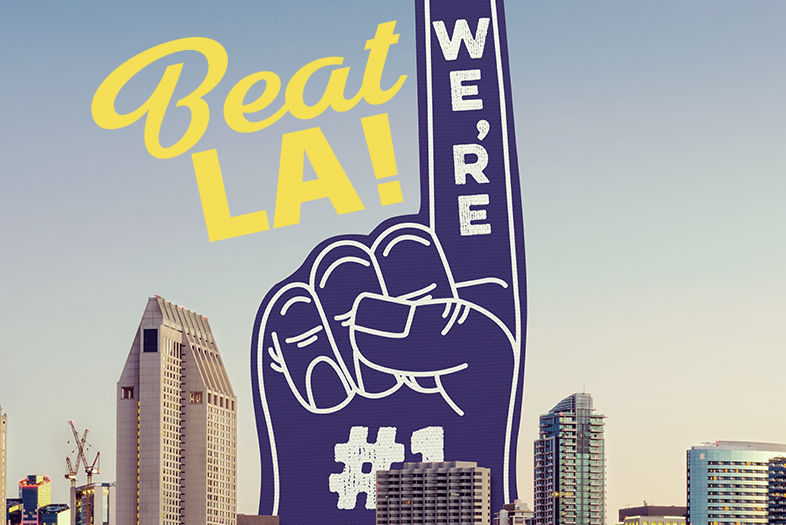
22 Reasons Why San Diego Is Better Than LA
Illustrations by Edmon de Haro (who lives in Spain)
